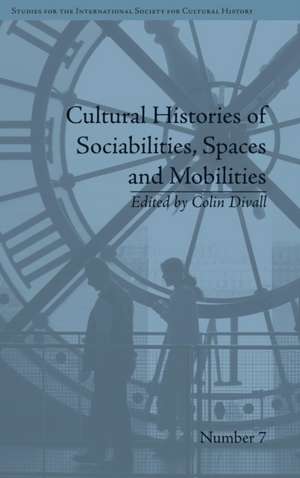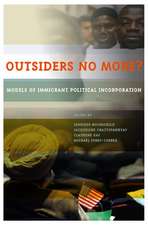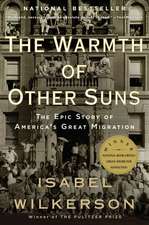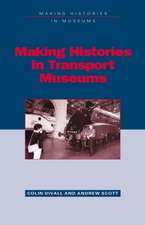Cultural Histories of Sociabilities, Spaces and Mobilities: Studies for the International Society for Cultural History
Autor Colin Divallen Limba Engleză Hardback – 2015
| Toate formatele și edițiile | Preț | Express |
|---|---|---|
| Paperback (1) | 260.73 lei 6-8 săpt. | |
| Taylor & Francis – 14 oct 2024 | 260.73 lei 6-8 săpt. | |
| Hardback (1) | 1058.69 lei 6-8 săpt. | |
| Taylor & Francis – 2015 | 1058.69 lei 6-8 săpt. |
Preț: 1058.69 lei
Preț vechi: 1291.09 lei
-18% Nou
Puncte Express: 1588
Preț estimativ în valută:
202.60€ • 219.100$ • 170.19£
202.60€ • 219.100$ • 170.19£
Carte tipărită la comandă
Livrare economică 23 aprilie-07 mai
Preluare comenzi: 021 569.72.76
Specificații
ISBN-13: 9781848935259
ISBN-10: 1848935250
Pagini: 266
Dimensiuni: 156 x 234 x 25 mm
Greutate: 0.57 kg
Ediția:1
Editura: Taylor & Francis
Colecția Routledge
Seria Studies for the International Society for Cultural History
Locul publicării:Oxford, United Kingdom
ISBN-10: 1848935250
Pagini: 266
Dimensiuni: 156 x 234 x 25 mm
Greutate: 0.57 kg
Ediția:1
Editura: Taylor & Francis
Colecția Routledge
Seria Studies for the International Society for Cultural History
Locul publicării:Oxford, United Kingdom
Cuprins
Introduction: Cultural Histories of Sociabilities, Spaces and Mobilities, Colin Divall; Part I Structuring Mobilities, Spaces, Sociabilities; Chapter 1 Home Lands: How Women on the Move Made the West, Virginia Scharff; Chapter 2 Gender and American Mobility: Cars, Women and the Issue of Equality, Margaret Walsh; Chapter 3 Colours, Compartments and Corridors: Racialized Spaces, Mobility and Sociability in South Africa, Gordon H. Pirie; Part II The Urban and Peri-urban; Chapter 4 Land and Labour: Rails, Workers and Commuting in South-West Flanders, Belgium, 1830–1930, Greet De Block; Chapter 5 City of Tomorrow: The Representations of Buenos Aires in the Future through Imagined Mobility c. 1880–1914, Dhan Zunino Singh; Chapter 6 How to Make a Map for the Hades of Names: The New York City Subway Map Wars of the 1970s, Stefan Höhne; Chapter 7 ‘This River Used to be So Full of Life’: Histories of Mobility on the Thames and their Role in the Negotiation of Place, Community and Sociability, Heidi Seetzen; Part III Pilgrims, Travellers and Tourists; Chapter 8 Otherness and Englishness in Late-Mediaeval Pilgrimage Guides, Emily Price; Chapter 9 Constructing the Tokugawa Spatial Imaginary: Kaibara Ekiken and his Revival of Fudoki, Nobuko Toyosawa; Chapter 10 Languages of Popular Hospitality in Seventeenth- and Eighteenth-Century France, Ulrike Krampl; Chapter 11 ‘Doing the Gap’: Sociability and Tourism Networks at Killarney, 1850–1914, Kevin J. James; Chapter 12 Eating Across the Ocean: The Role of Food in the Construction of the Tourists’ North Atlantic, 1947–76, Birgit Braasch; Chapter 13 Automobility and the Building of Tourism in Communist Romania c. 1960–89, Adelina Oana Stefan; Chapter 14 Moving Towards Santiago: Reverie on the Road and Rails, Jennifer Sime;
Descriere
For the majority of us the opportunity to travel has never been greater, yet differences in mobility highlight inequalities that have wider social implications. Exploring how and why attitudes towards movement have evolved across generations, the case studies in this essay collection range from medieval to modern times and cover several continents.

























